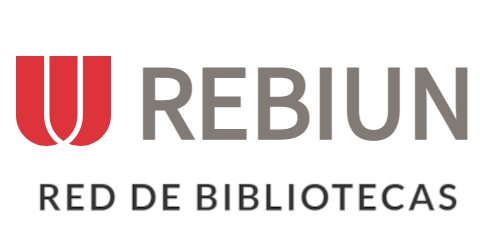Principales enfermedades del cultivo de tomate (Solanum lycopersicum L.) en condiciones de campo
Resumen
El tomate es un cultivo importante en la zona productora del Sur de Tamaulipas, un factor limitante para su producción son las enfermedades, causadas por hongos, virus y bacterias, pueden propagarse en condiciones de campo abierto, y se desarrollan rápidamente cuando el clima es favorable. Para realizar un control eficaz es importante identificar el agente causal y diferenciar sus síntomas, estableciendo un programa de monitoreo y aplicar las medidas de control bajo un esquema de manejo integrado de enfermedades, usando variedades resistentes a las enfermedades, además del uso de diferentes insecticidas, fungicidas y bactericidas. Sin embargo, es importante integrar prácticas culturales como y manejo de fechas de siembra, control biológico con entomopatógenos y antagonistas. Esta revisión informa las principales enfermedades del cultivo de tomate a campo abierto en el sur de Tamaulipas, México, haciendo énfasis en la sintomatología, importancia económica, características morfológicas y el manejo de la enfermedad.
Descargas
Citas
Abdel-Raheem, M. A., & Al-Keridis, L. A. (2017). Virulence of three entomopathogenic fungi against whitefly, Bemisia tabaci (Gennadius) (Hemiptera: Aleyrodidae) in tomato crop. Journal of Entomology, 14(4), 155-159.
Abhary, M., Patil, B. L., & Fauquet, C. M. (2007). Molecular biodiversity, taxonomy, and nomenclature of tomato yellow leaf curl-like viruses. In Tomato yellow leaf curl virus disease (pp. 85-118). Springer, Dordrecht.
Abro, M. A., Lecompte, F., Bryone, F., & Nicot, P. C. (2013). Nitrogen fertilization of the host plant influences production and pathogenicity of Botrytis cinerea secondary inoculum. Phytopathology, 103(3), 261-267.
Adhikari, P., Oh, Y., & Panthee, D. R. (2017). Current status of early blight resistance in tomato: an update. International journal of molecular sciences, 18(10), 2019. DOI: 10.3390/ijms18102019
Agrios G.N. Elsevier Academic Press; Burlington, MA: 2005. Plant Pathology.
Ali, B. G., Wang, B., Cao, N., & Hua, F. L. (2018). Pathogenicity of Beauveria bassiana strain 202 against sap-sucking insect pests. Plant Protection Science, 54(2), 111-117.
An, S. Q., Potnis, N., Dow, M., Vorhölter, F. J., He, Y. Q., Becker, A., ... & Tang, J. L. (2020). Mechanistic insights into host adaptation, virulence and epidemiology of the phytopathogen Xanthomonas. FEMS Microbiology Reviews, 44(1), 1-32.
Animashaun, B. O., Popoola, A. R., Enikuomehin, O. A., Aiyelaagbe, I. O. O., & Imonmion, J. E. (2017). Induced resistance to Fusarium wilt (Fusarium oxysporum) in tomato using plant growth activator, acibenzolar-S-methyl. Nigerian Journal of Biotechnology, 32(1), 83-90.
Antignus, Y., Lapidot, M., Hadar, D., Messika, Y., & Cohen, S. (1998). Ultraviolet-absorbing screens serve as optical barriers to protect crops from virus and insect pests. Journal of Economic Entomology, 91(6), 1401-1405.
Barkai-Golan, R. (2001). Postharvest diseases of fruits and vegetables: development and control. Elsevier.
Benito, E. P., Arranz, M., & Eslava, A. (2000). Factores de patogenicidad de Botrytis cinerea. Revista Iberoamericana de Micología, 17, S43-S46.
Bharti, P., Jyoti, P., Kapoor, P. et al. El silenciamiento de genes de patogenicidad inducido por el huésped mejora la resistencia al marchitamiento por Fusarium oxysporum en el tomate. Mol Biotechnol 59, 343–352 (2017). https://doi.org/10.1007/s12033-017-0022-y
Bhat, N. A., Syeed, N., Bhat, K. A., & Mir, S. A. (2010). Pathogenicity and Host Range of Xanthomonas campestris pv. campestris – Incitant of Black Rot of Crucifers. Journal of Phytology.
Biju, V. C., Fokkens, L., Houterman, P. M., Rep, M., & Cornelissen, B. J. (2017). Multiple evolutionary trajectories have led to the emergence of races in Fusarium oxysporum f. sp. lycopersici. Applied and environmental microbiology, 83(4).
Cha, J. Y., Han, S., Hong, H. J., Cho, H., Kim, D., Kwon, Y., ... & Kwak, Y. S. (2016). Microbial and biochemical basis of a Fusarium wilt-suppressive soil. The ISME journal, 10(1), 119-129.
De Granada, E. G., De Amezquita, M. C. O., Mendoza, G. R. B., & Zapata, H. A. V. (2001). Fusarium oxysporum el hongo que nos falta conocer. Acta biológica colombiana, 6(1), 7-25.
DEAC PLM México https://www.agroquimicos-organicosplm.com/ consultado 03 Marzo 2021.
Debbi, A., Boureghda, H., Monte, E., & Hermosa, R. (2018). Distribution and genetic variability of Fusarium oxysporum associated with tomato diseases in Algeria and a biocontrol strategy with indigenous Trichoderma spp. Frontiers in microbiology, 9, 282.
Denancé, N., Szurek, B., Doyle, EL, Lauber, E., Fontaine ‐ Bodin, L., Carrère, S., ... y Noël, LD (2018). Dos genes ancestrales dieron forma al repertorio de genes efectores TAL de Xanthomonas campestris. Nuevo fitólogo, 219 (1), 391-407.
Dhaliwal, M. S., Jindal, S. K., Sharma, A., & Prasanna, H. C. (2020). Tomato yellow leaf curl virus disease of tomato and its management through resistance breeding: a review. The Journal of Horticultural Science and Biotechnology, 95(4), 425-444.
Di, X., Takken, F. L., & Tintor, N. (2016). How phytohormones shape interactions between plants and the soil-borne fungus Fusarium oxysporum. Frontiers in plant science, 7, 170.
Elsisi, A. (2017). Role of Antibiosis in Control of Cabbage Black Rot Caused by Xanthomonas campestris pv. campestris. Egyptian Journal of Phytopathology, 45(2), 165-181.
Espinoza-Ahumada, César Alejandro, Gallegos-Morales, Gabriel, Ochoa-Fuentes, Yisa María, Hernández-Castillo, Francisco Daniel, Méndez-Aguilar, Reinaldo, & Rodríguez-Guerra, Raúl. (2019). Microbial antagonists for the biocontrol of wilting and its promoter effect on the performance of serrano chili. Revista mexicana de ciencias agrícolas, 10(spe23), 187-197. Epub 20 de noviembre de 2020. https://doi.org/10.29312/remexca.v0i23.2020
Faostat. 2019. Cultivos. De: http://www.fao.org/faostat/es/#data/QC. Consultado: Agosto/23/2020.
Fillinger, S., & Elad, Y. (Eds.). (2016). Botrytis: the fungus, the pathogen and its management in agricultural systems (pp. 189-216). Switzerland: Springer International Publishing.
Fillinger, S., & Elad, Y. (Eds.). (2016). Botrytis: the fungus, the pathogen and its management in agricultural systems (pp. 189-216). Switzerland: Springer International Publishing.
García, R. (2017). Botrytis cinerea en el cultivo de Rosa hibrida en la zona florícola sur del Estado de México y la evaluación de su sensibilidad in vitro a fungicidas. Universidad Autónoma de México.
Garzón-Tiznado, J. A., Cárdenas-Valenzuela, O. G., Bujanos-Muñiz, R., Marín-Jarillo, A., Becerra-Flora, A., Velarde-Felix, S., ... & Martínez-Carrillo, J. L. (2009). Asociación de Hemiptera: Triozidae con la enfermedad “permanente del tomate” en México. Agricultura técnica en México, 35(1), 61-72.
González, C., Brito, N., & Sharon, A. (2016). Infection process and fungal virulence factors. In Botrytis the fungus, the pathogen and its management in Agricultural Systems (pp. 229–246). Springer.
Hernández-Castillo, F. D., Lira-Saldivar, R. H., Gallegos-Morales, G., Hernández-Suárez, M., & Solis-Gaona, S. (2014). Biocontrol de la marchitez del chile con tres especies de Bacillus y su efecto en el crecimiento y rendimiento. Phyton (Buenos Aires), 83(1), 49-55.
Hernández-Herrera, R. M.; Santacruz-Ruvalcaba F.; Ruiz-López M. A.; Norrie J.; Hernández-Carmona G. Effect of liquid seaweed extracts on growth of tomato seedlings (Solanum lycopersicum L.). Journal of applied phycology. 2014.26(1): 619-628.
Herrera Díaz, A., Kovacs, I. y Lindermayr, C. (2016). La expresión inducible del péptido antimicrobiano SP1-1 diseñado de-Novo en tomate confiere resistencia a Xanthomonas campestris pv. vesicatoria. PloS uno, 11 (10), e0164097. https://doi.org/10.1371/journal.pone.0164097
https://www.redalyc.org/pdf/2631/263149505008.pdf
Iannacone, J., & Gómez, H. (2008). Effect of two entomopathogenic fungi in controlling Aleurodicus cocois (Curtis, 1846) (Hemiptera: Aleyrodidae). Chilean Journal of Agricultural Research.
Jaramillo, N. J., V. P. Rodríguez, A. M. Guzmán y M. A. Zapata. 2006. El cultivo de tomate bajo invernadero (Lycopersicon esculentum. Mill) 1-48
Jiang, W., Peng, Y., Ye, J., Wen, Y., Liu, G., & Xie, J. (2020). Effects of the Entomopathogenic Fungus Metarhizium anisopliae on the Mortality and Immune Response of Locusta migratoria. Insects, 11(1), 36.
Jiménez, M. D. C. M., Hernández, F. D., Alcalá, E. I. L., Morales, G. G., Valdés, R. A., & Reyes, F. C. (2018). Biological effectiveness of Bacillus spp. and Trichoderma spp. on apple scab (Venturia inaequalis) in vitro and under field conditions. European Journal of Physical and Agricultural Sciences Vol, 6(2).
Kaur, H., Nyochembeng, L. M., Mentreddy, S. R., Banerjee, P., & Cebert, E. (2016). Assessment of the antimicrobial activity of Lentinula edodes against Xanthomonas campestris pv. vesicatoria. Crop Protection, 89, 284-288.
Khan, N., Maymon, M., & Hirsch, A. M. (2017). Combating Fusarium infection using Bacillus-based antimicrobials. Microorganisms, 5(4), 75
Lefeuvre, P. y Moriones, E. (2015). La recombinación como motor de los cambios del huésped y la aparición de virus: geminivirus como estudios de caso. Opinión actual en virología, 10, 14-19.
Leslie, J. F. and Summerell, B. A. 2006. The Fusarium burkinafaso. Laboratory manual. Blackwell Publishing, State Avenue, Ames, Iowa. 212-218 pp.
Martínez-Ruiz, E., L. Cervantes-Díaz, C. Aíl-Catzím, L. Hernández-Montiel, C. Del Toro, y E. Rueda-Puente. (2016). Hongos fitopatógenos asociados al tomate (Solanum Lycopersicum L.) En la zona árida del noroeste de México: la importancia de su diagnóstico. European Scientific Journal 12.
Molina M.R. (2011). Identificación y evaluación de antagonistas del tizón temprano (Alternaria solani) en tomate (Lycopersicon esculentum Mill). Tesis de Maestría. Universidad de Guayaquil, Facultad de Ciencias Agrarias. Pág. 1 – 43.
Moriones, E., & Navas-Castillo, J. (2000). Tomato yellow leaf curl virus, an emerging virus complex causing epidemics worldwide. Virus research, 71(1-2), 123-134.
Palumbo, J. C., Horowitz, A. R., & Prabhaker, N. (2001). Insecticidal control and resistance management for Bemisia tabaci. Crop protection, 20(9), 739-765.
Prihatna, C., Barbetti, M. J., & Barker, S. J. (2018). A novel tomato Fusarium wilt tolerance gene. Frontiers in microbiology, 9, 1226.
Ramírez González, S. I., López Báez, O., Espinosa Zaragoza, S., & Wong Villarreal, A. (2016). Actividad antifúngica de hidrodestilados y aceites sobre Alternaria solani, Fusarium oxysporum y Colletotrichum gloesporioides. Revista mexicana de ciencias agrícolas, 7(8), 1879-1891.
Saddler, G. S., & Bradbury, J. F. (2015). Xanthomonas. Bergey's Manual of Systematics of Archaea and Bacteria, 1-53.
Sain, S. K., Monga, D., Kumar, R., Nagrale, D. T., Kranthi, S., & Kranthi, K. R. (2019). Comparative effectiveness of bioassay methods in identifying the most virulent entomopathogenic fungal strains to control Bemisia tabaci (Gennadius)(Hemiptera: Aleyrodidae). Egyptian Journal of Biological Pest Control, 29(1), 1-11.
Sánchez, C. M. Manejo De enfermedades del tomate. Curso del INCAPA “Manejo integrado de plagas y enfermedades en tomate, chile y papa”. Guadalajara, Jalisco, México. 2001. 22-39
Schuster, D. J., Mann, R. S., Toapanta, M., Cordero, R., Thompson, S., Cyman, S., ... & Morris II, R. F. (2010). Monitoring neonicotinoid resistance in biotype B of Bemisia tabaci in Florida. Pest Management Science: formerly Pesticide Science, 66(2), 186-195.
SIAP 2019. Servicio de Información Agroalimentaria y Pesquera. Consultado el 10 de octubre del 2020.
Singh, V. K., Singh, H. B., & Upadhyay, R. S. (2017). Role of fusaric acid in the development of ‘Fusarium wilt’symptoms in tomato: Physiological, biochemical and proteomic perspectives. Plant physiology and biochemistry, 118, 320-332.
Srinivas, C., Devi, D. N., Murthy, K. N., Mohan, C. D., Lakshmeesha, T. R., Singh, B., ... & Srivastava, R. K. (2019). Fusarium oxysporum f. sp. lycopersici causal agent of vascular wilt disease of tomato: Biology to diversity–A review. Saudi journal of biological sciences, 26(7), 1315-1324.
Vicente, J. G., & Holub, E. B. (2013). Xanthomonas campestris pv. campestris (cause of black rot of crucifers) in the genomic era is still a worldwide threat to brassica crops. Molecular plant pathology, 14(1), 2-18.
Vos, C. M., De Cremer, K., Cammue, B. P., & De Coninck, B. (2015). The toolbox of Trichoderma spp. in the biocontrol of Botrytis cinerea disease. Molecular plant pathology, 16(4), 400-412.
Weiberg, A., Wang, M., Lin, FM, Zhao, H., Zhang, Z., Kaloshian, I., ... y Jin, H. (2013). Los ARN pequeños fúngicos suprimen la inmunidad de las plantas al secuestrar las vías de interferencia del ARN del huésped. Ciencia, 342 (6154), 118-123.
Zhang, C., Ali, S., Musa, P. D., Wang, X. M., & Qiu, B. L. (2017). Evaluation of the pathogenicity of Aschersonia aleyrodis on Bemisia tabaci in the laboratory and greenhouse. Biocontrol science and technology, 27(2), 210-221
Derechos de autor 2022 Alma Leticia Salas Gómez;Eduardo Osorio Hernández;César Alejandro Espinoza Ahumada;Raúl Rodríguez Herrera;Ma. Teresa de Jesús Segura Martínez;Efraín Neri Ramírez;Benigno Estrada Drouaillet

Esta obra está bajo licencia internacional Creative Commons Reconocimiento 4.0.











.png)




















.png)
1.png)


